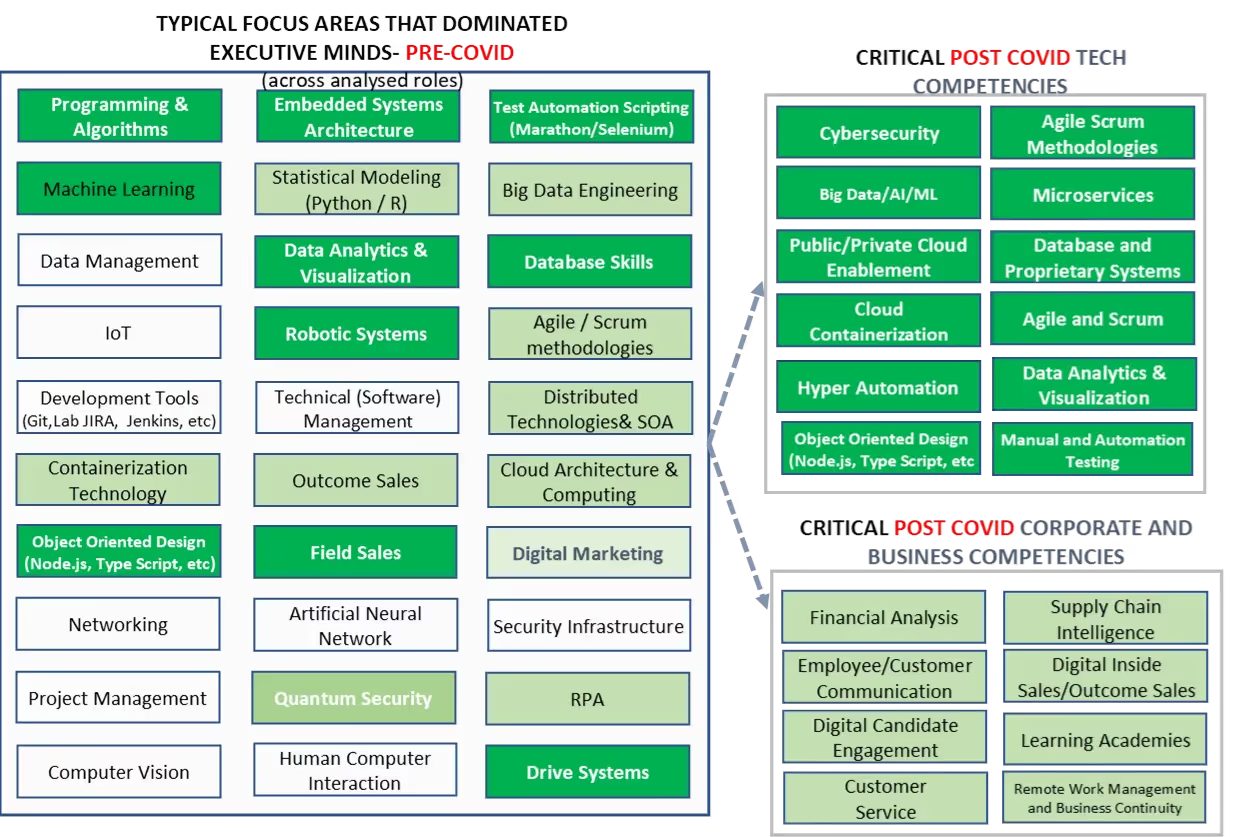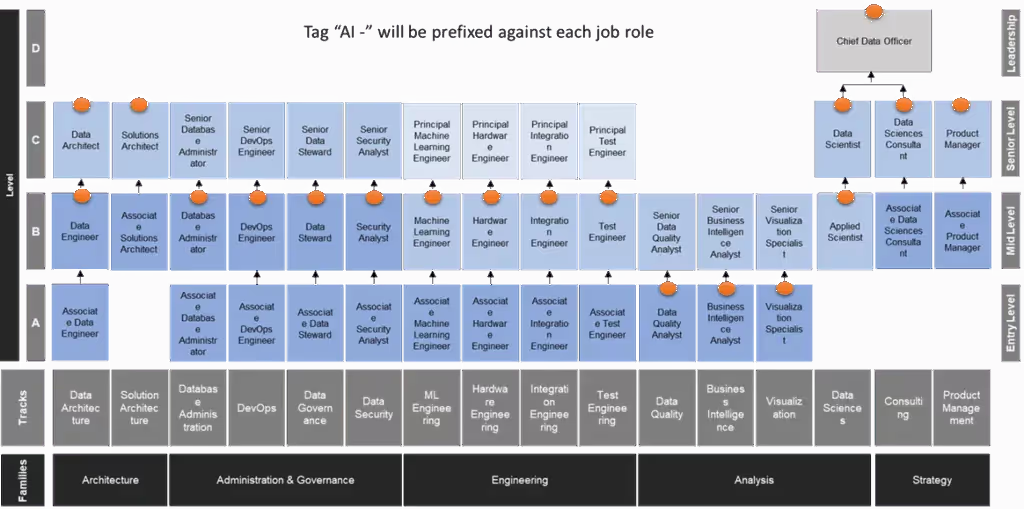Modern Workforce Planning: 4 Trends Dominating Executive Thinking
Covid19 has taken over the minds of executives. At Draup, we did manage to have several engaging conversations across several clients. I am delighted to bring this summary to you. I think the world post this Covid19 is full of potential and possibilities. I know it is difficult to think about that now- but this too will be over soon.
Trend 1: Executive Mindset is now beginning to appreciate Corporate and Business Functions
Prior to this episode, all strategic workforce planning conversations largely centered only around Technology skills. Now, companies are realizing the importance of Financial Analysis, Supply Chain Intelligence, Business Continuity, Remote work technologies, Customer Service, Digital Candidate Engagement and other similar skills. Though we are having this awareness against the background of a very unfortunate situation, these are crucial to be a successful company. Technology skills like Cybersecurity, Public/Private Cloud enablement and Hyper Automation will remain/emerge as super high priorities.

Trend 2: Establishment of Future Skills Learning Academy
Learning is extremely crucial during these times. The need for future skills and the digitization of such skills will accelerate across functions. Many companies are thinking in terms of academies. Arriving at an inventory of skills (technical, business and corporate) to transition into will be very crucial. This activity in many ways cannot be deferred as we want to rapidly transition the workforce
Trend 3: Getting rid of Inflexible/Traditional Succession Planning
This new age requires lot of mid-level and senior leaders. The current succession planning has no way of supporting this. This would require deeper understanding of the skill sets of the existing resources and existing leaders in the organization. You have to analyze the leadership through the lens of Technical, Functional and Soft skills competencies.
- We have to table several hypotheses and discuss the merits of the same.
- For example, HR leaders who are extremely good in employee communication – can they lead Customer Communication in these difficult times.
- Can HR be reimagined and offered as Microservices and offered as support to large workforce clients – for example
We will be building several new hypotheses in the coming weeks
Trend 4: Occupation Maps
Many of the new age roles do not have proper levelling and understanding of progressions. To combat this issue, we are developing what is called Occupational maps. This will help you navigate new and unknown areas of competence. We will do more work around this in the coming weeks.











.svg)




















.svg)





.svg)
